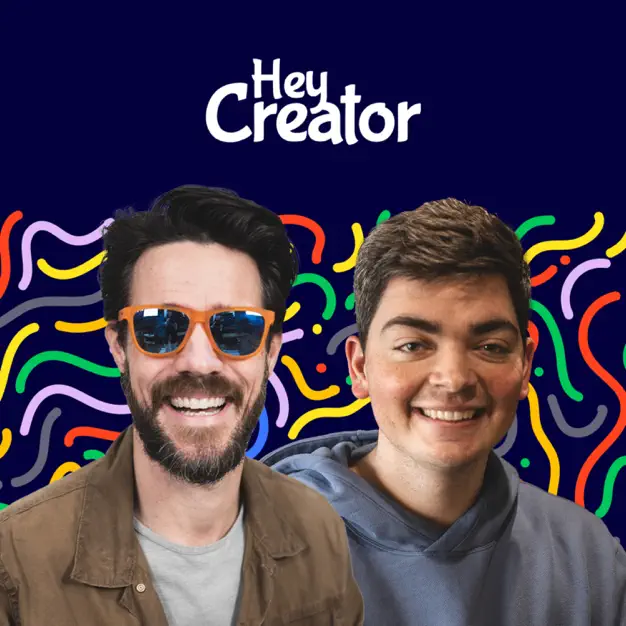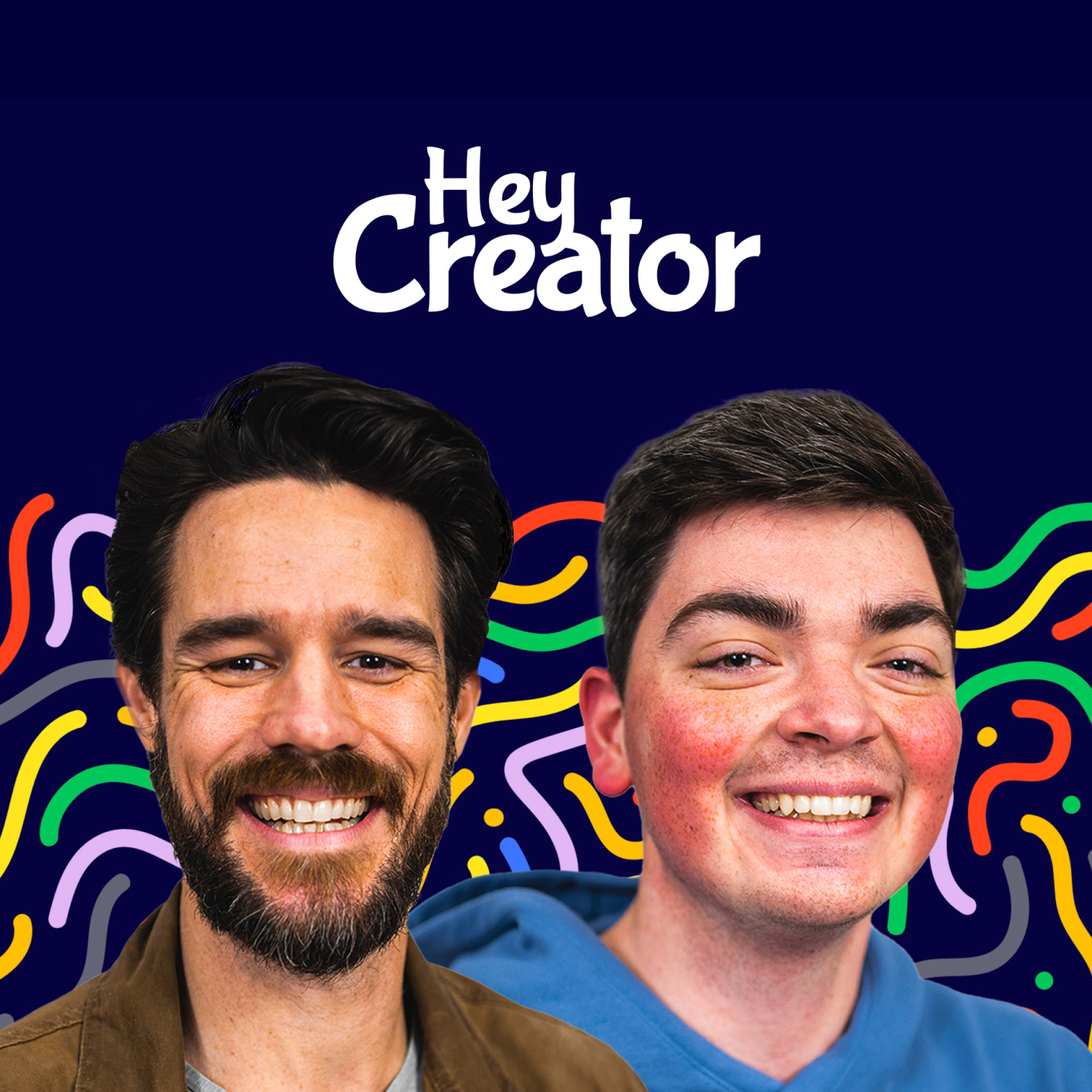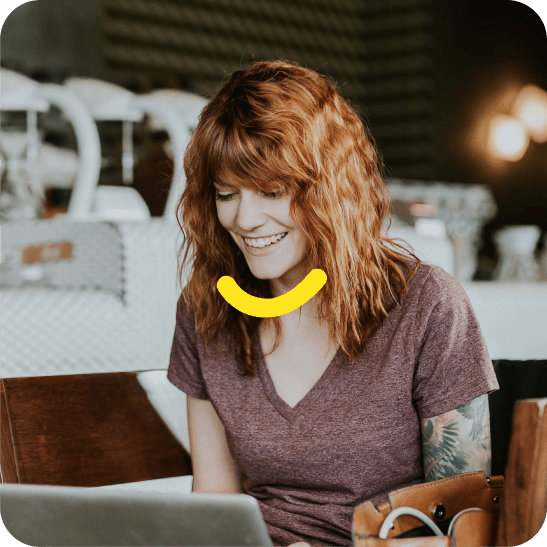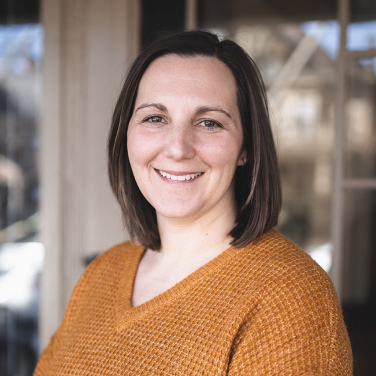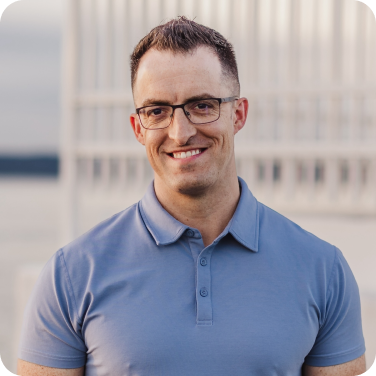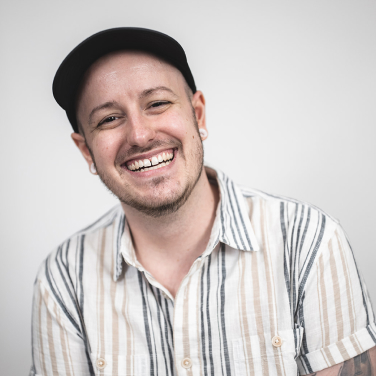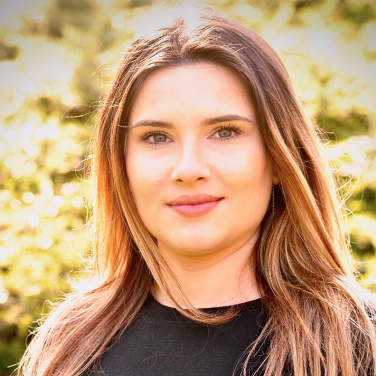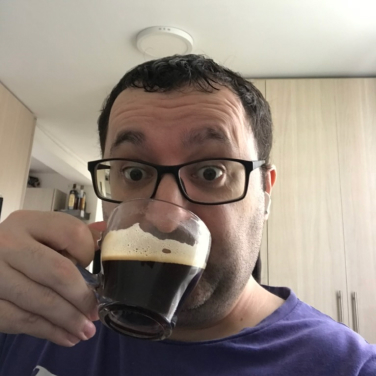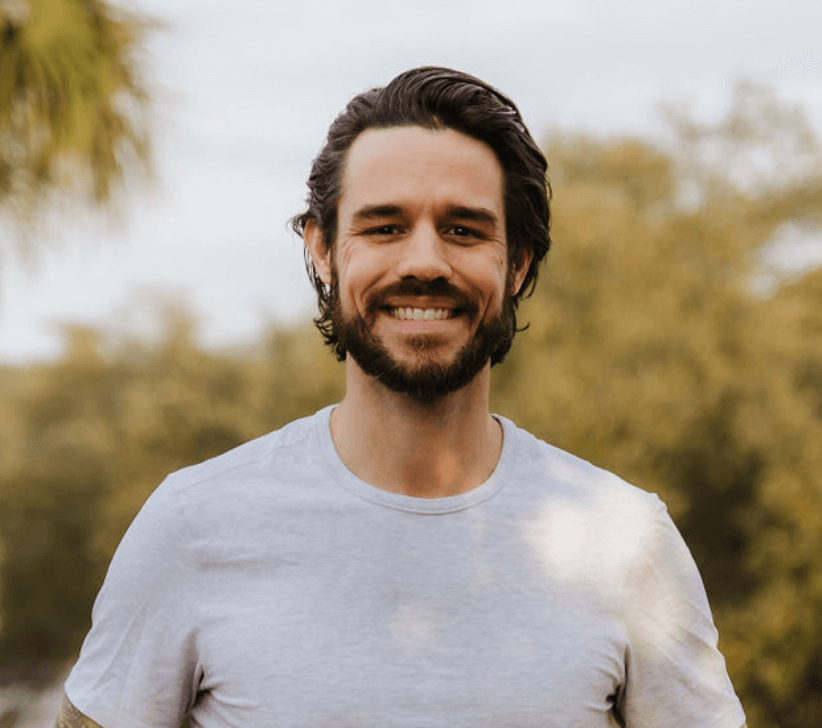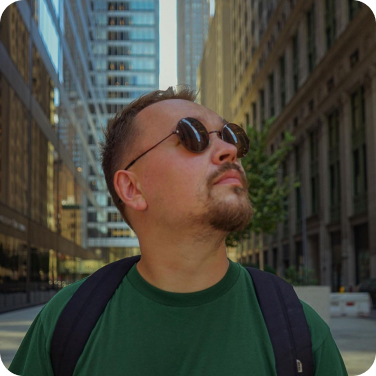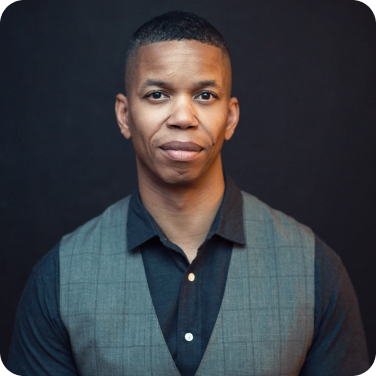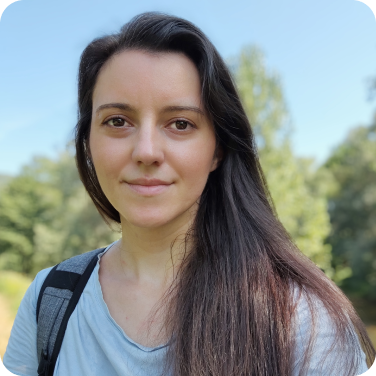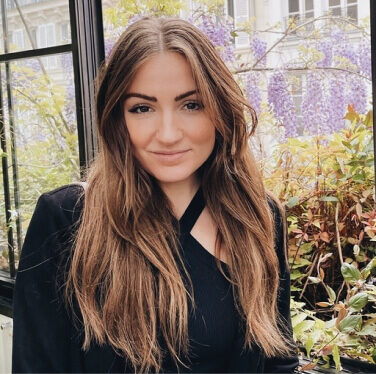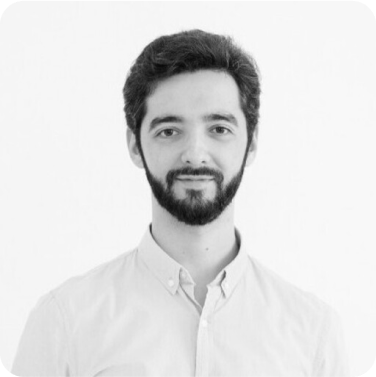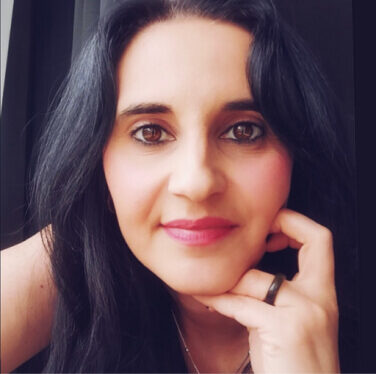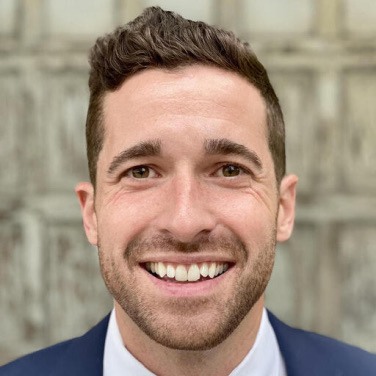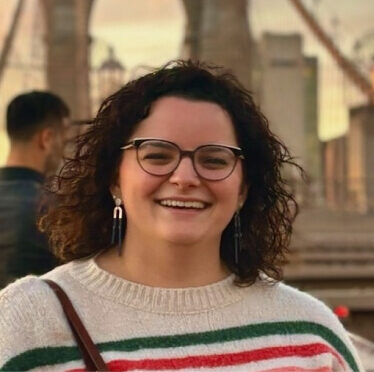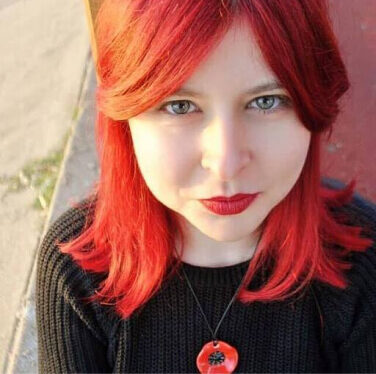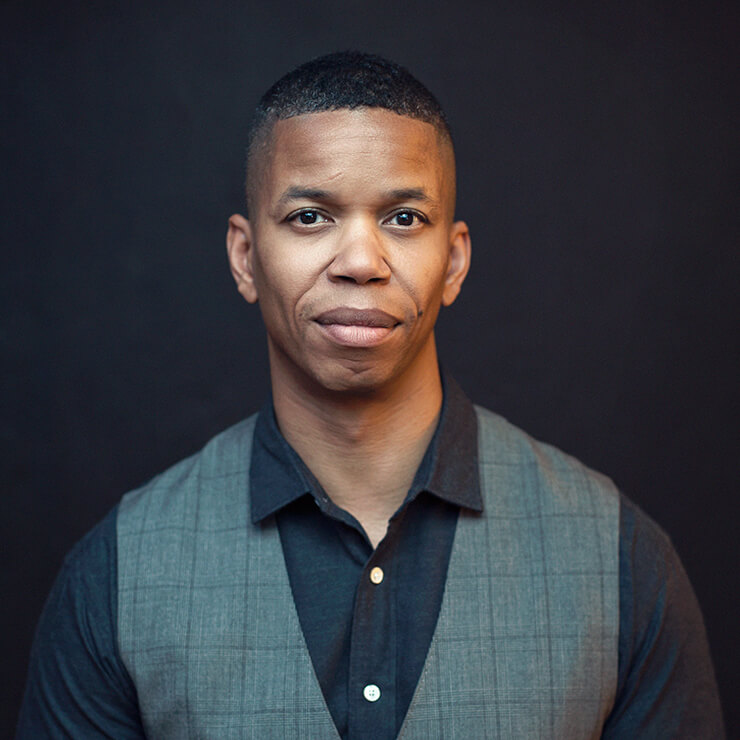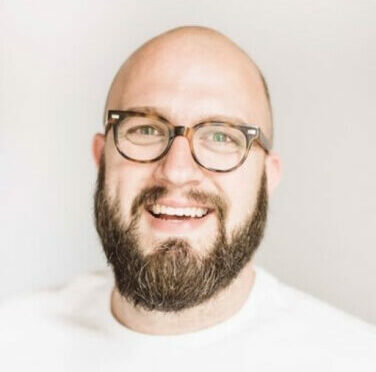[00:00:00] Matt Ragland: How do the most successful community builders do it? What makes their online community thrive without their direct involvement? Well, today on the HeyCreator show, we’re going to find out. I recently talked with my friend, Gina Bianchini, who is the co founder and CEO of Mighty Networks. We’re also joined by my friend, fellow Nashville and partner at Late Checkout, Jordan Mix.
I wanted to bring them on the show to talk about what makes communities thrive and how to design a successful community. Both Gina and Jordan are true experts in the online community space. So let’s go ahead and jump into the conversation. We’re going to be talking about community and specifically elements of community design, because there’s, when you say the word community, a lot of things come to mind.
And one of the things that Gina and Jordan are both excellent at is Designing a community that is not reliant on like the star of, you know, the star of personality. And that was something that in a previous conversation, uh, I said was like a concern for me when I was starting community, which, you know, in some ways it’s like, It can be true, but it’s also like a pretty, like a pretty egotistical thing.
I think like, well, you know, I’m a pretty big deal and I don’t know how much I can stay this big deal to everyone and just be me all the time. And Gina, I loved how you like immediately pushed back. It was like, yeah, you don’t have to do that. And I’ve had lots of conversations with Jordan about like, Uh, about this topic also.
So I just want to like dive in and like give it to you, Gina, first to talk about like how you think about community design, because I think it’s really smart and it’s something that makes community a lot more accessible to people.
[00:01:38] Gina Bianchini: Yeah. So just as, as background, you know, when I first started working in community, there were no stars.
Like, there, there were no creators as we sort of know it today. Communities were started by people who had a shared love or a shared purpose. And that’s why they were starting the communities. And that’s certainly what happened from sort of the earliest forums on the internet, all the way through to today.
I would say sort of the rise of the creator and the creator economy, which really didn’t sort of get a name until 2000 and 18, 2019 even. Um, but it’s funny. At my, at my first startup, Ning, we actually called them creators, but it, it didn’t, it, it wasn’t the way that YouTube creators has really become almost, uh, an industry in and of itself.
So, the funny thing, kind of going back to that experience at Ning, the, the people who had communities and were creating communities were like actually legitimate celebrities. Like one of our largest communities on Ning was. 50 Cent. Like, and, and he created a nearly million person hip hop lifestyle community.
And that was, you know, did we start Ning because we thought that that would be the vertical we would go after? Not, not really. And then another was like Cricket. Cricket, it, that also had about a million people in it. But then we also supported things like the Offbeat Bride Tribe. You know, these were a bunch of goth brides that were doing really interesting, cool stuff.
And then politicians were using it. So I, I, I came to Mighty with this belief that community first and foremost is about the purpose. And what has been really powerful about that is, you know, I, I kind of just took everything that I had seen and viewed and put it together in this framework that I called community design.
And the promise of community design is kind of, again, taking all these patterns I’ve seen over literally 3 million years. Networks and communities created reaching a hundred million people around the world first at Ning and now at Mighty and Breaking it up into patterns and Playbooks that seem to work for people that have no Following and then people who have a following and the reason I share that is because we can talk more about like what’s in it but what’s been really interesting is I put this together about I guess five years ago now and And What’s been so interesting to see on Mighty is that we’ve now been rolling out community design for people who do have large followings and the results have been Extraordinary.
[00:04:35] Matt Ragland: Did you have that playbook to like give to them? Yeah, but I
[00:04:38] Gina Bianchini: didn’t like we built it for people for people who had no audience. It turns out that it works really well for people who don’t have an audience, and it works even better for people who do have an audience. And I just didn’t expect that, and I didn’t That sounds like a humble brag, and it kind of is.
I’ll own that. But at the same point in time, I was Like, this just happened I think I talked to you about this like right after I heard these results and I don’t want to use names, but a very large podcaster and author year one launched a membership to help people, you know, achieve results and transformation that they can’t get on their own.
Um, 5, 000 people bought the program for a thousand dollars in less than 10 days. They manage, they, they were like, Oh, well I have to go live every week and had a staff of six part time people. As they enter year two, they have a clear line of sight to between eight and 10, 000 people. Same price. This is where it gets real interesting.
three part time people because they, and then they don’t have to go live until they want to. What’s the difference? When the platform focuses in on how do I create relationships between people, which is a very different thing than just like setting up a Facebook group. But when you can create relationships between people that don’t already know each other, That’s where you get the magic.
And I didn’t ask for this, but it was great. Like our, our data science team at Mighty came back to me and they were like, uh, There’s only one thing that actually matters if you want to have a longstanding successful membership or course and it’s the connections members are making between each other. So community design is the, is the framework for doing that anywhere.
And then hopefully the software is there to automate more and more of that to make it easier and easier. So it’s, it’s community design is. It’s the strategy that you can really apply anywhere. And then if we do our jobs right at Mighty, we’re building the software to make all of that automated and all of that essentially something that you don’t actually have to get good at yourself.
[00:06:59] Matt Ragland: Yeah. And especially with all the data that, um, is available from, from your members and you can even get even more of that and more targeted based on surveys and intake and other thing that you can do. Jordan, I’m curious, like you’ve worked with a lot of communities. I know one of the ways that we first got connected was I took a course called community college, and that was really inspiring to me as a way of thinking about like, how could I, like, Cause I, I had an audience at, at the time, I guess I still do, but it made me think in a different way, like, like we were talking about not just being like, trying to create something around a cult of personality and make it more of a, we, we, not me.
Um, and so like, what, what do you see? I know you’ve been a part of a bunch of communities and you’ve helped launch or guide many of them. What are some of those, like. that you see about developing community and designing outcomes.
[00:08:03] Jordan Mix: Yeah. I think what you said was really interesting. When, when you go to set up a community and design the community, a lot of people take their insecurities.
And they just bolt things on. They’re just like, it’s gotta be more, it’s gotta be more. And they’re like, set all these expectations around themselves. And they think they have to be like, the one running it, etc. Um, and it’s just not, it’s not true. You have to design the community to work for you. As your resources, allocation, what you want to do.
But also for the members because like a successful community is like, yeah, you got to brute force it on the, on, off the jump. But then the, how you know, like the metric of a successful community is you getting out of the way and letting it thrive. Yeah. Like the first person that I ever realized, really saw do that is Jack Butcher, who is a, is a mighty customer.
Um, and that’s who, who told me about mighty actually, um, back in like 2021, but he has a discord and, and, He’s he hangs out in there, but like he doesn’t pay anyone There’s like a self governance and it is just such a like a unique spot That he can go and get it if he needs it and it obviously facilitates his business But he’s not brute forcing that connection and like people have been able to link up all over the world collab on Projects like the things that spawn out of that like there’s co founders that have found each other in there So I think that’s like the common misconception.
I always
[00:09:27] Gina Bianchini: think about it as, the goal should be that the party is good enough that you can go upstairs and go to bed. You’ve made the introductions. You’ve like set the, you’ve like set the, the vibe. You’ve like made everybody feel at ease. But if, if you’ve done your job right, and that’s, that’s why like this framework is really designed for, um, and I’m happy to talk about it.
It’s not like I’m like the secret framework, like somehow I think, I think I might’ve mentioned this. I have gotten into, like I tripped some wire and now the only ads I see on Instagram are like course and funnel program ads. It’s everywhere. So anyway, so I’m not, like I’m happy to like share that. Sure, sure,
[00:10:13] Jordan Mix: sure.
If we pay. Yeah, like I’m like, it’s free. Just like, it’s free,
[00:10:18] Gina Bianchini: just like, let’s have a conversation. But it’s so interesting to me that. And, and, and where I think it comes from is that the whole story of being a creator is your art, your content. You have to produce, you have to produce, you have to produce, you have to produce.
And at no point do I hear enough, I hear sometimes, but do I hear enough of what is the progress that you want the people that you want to reach to have in their lives? is actually an incredibly effective way for anybody to achieve their goals. Like achieve results, achieve transformation. Cause again, you, you shift it from being about your own individual willpower to just like the culture that you’re in and the culture that you’re creating.
And I think Jack’s a great example of this. And I think so many of the other things that you’ve worked on are similar.
[00:11:17] Jordan Mix: Are you guys doing services at Mighty? Like, are you helping with community design as a service? Yeah,
[00:11:23] Gina Bianchini: we do. And, and that’s actually came from, it was fun and obvious for us. And so we, we included, like, we package it up with, with our software, but it was really more like, wow, this is working really, really well over here.
So. Why don’t, why don’t we show you how to do it so that, that you can have like a really good result as well. You know, we really, and certainly I started, I started Mighty not because I’m like, I want to create the world’s best business. I started Mighty because I’m like, more and more people should have that incredible experience of feeling like they are part of something bigger than themselves.
And we’ve kind of moved away from that. And what I love about what you’re doing and Matt, what you’re doing is that you’re bringing that back. So even in these, you know, at times very isolating choices of being a creator or a solo entrepreneur, it’s like, how do you bring the community and the humanity back to it?
It’s really, it’s important.
[00:12:27] Matt Ragland: Yeah. He’s one of the, you know, It is wonderful that you can do so many things as a solo creator, that the opportunities and the revenue isn’t like capped by you being an individual person. But at the same time, it is still like, even for introverted folks, it is lonely to be an individual person on the internet.
And I think like communities. Our unique and special places where you can share your wins and your losses, your frustrations, the things that you’re excited about. You can like bounce some ideas off people to be like, Hey, what do you think about this as, as a product or as a piece of content? Or like, just to get like, just, just feedback even, especially for us in HeyCreator, like I see people all the time.
They’re like, Hey, I’m thinking about this video concept. Okay, let me, like, record three minutes of it. What do you think about these thumbnails? And same thing for, like, check out this email template that I designed. What do you think about this versus this one? And so, Just the ability to like, ask that and know you’re going to get a response is pretty cool.
Cause we’ve all had the experience, especially like pretty, maybe pretty early on and like the social days, like you might post something and even still like, you know, unless we’re, you know, have really, really big, really, really big audiences. If you say like, Hey, which thumbnail do you like better? And then it’s crickets like that, that feels like kind of a bummer.
But if you’re a part of a group of people who are all like part of a bigger thing and driving towards a shared. Purpose and ideal. Like, Hey, what do you think about these subject lines? What do you think about this thumbnail? I’m thinking about developing a product like this. And I think it’s going to take six weeks and be like, Oh, what, what could you do in two weeks that might validate the concept so you could get it done and get some money in the door and understand that this is going to work instead of wasting six months, six weeks or six months, like getting, having that kind of like, Collaboration is like, especially in, in our example is such a, is such a key thing.
Like it, it takes care of everything else.
[00:14:30] Jordan Mix: Yeah. Getting that feedback is huge. And it’s like a breaker where you can like. It’s another channel that’s not like the free market necessarily. So you can get more reps.
[00:14:39] Gina Bianchini: How did you start? And what drew you to community?
[00:14:42] Jordan Mix: Yeah. Um, just like wanting to do cool things with cool people.
Like, to be honest, like I was always in the name of your newsletter. It’s do within, do within, um, do cool things with cool people in cool places. for the shout. Yeah. So I started in med tech as an entrepreneur. I was a mechanical engineer by training and, um, I did engineering and, um, In school to do marketing, I guess, um, uh, and, uh, I started a med device company, raised 6 million bucks, took that through the FDA and then parlayed that into a, an agency in med tech and I was selling to hospital systems.
And so I learned a lot about the community element of like how those inner systems worked and like that was a hack, but honestly I was like in the wrong place. It was like a square peg in a round hole. Um, it just like wasn’t working. And so I, uh, I just was like really curious about the internet and like being curious online and doing permissionless projects and meeting people.
And then these communities like Jack’s being one of them, um, and then Greg meeting Greg in Late Checkout and all the stuff that they were doing, it just like was so inspiring. Like you’re like serendipity surface area, luck surface area goes so much like expand so much by just being a part of communities.
I think a lot of people, like, Web3 did a number on communities, like, that, that word. Um, the community, so. But, like, everyone’s communal in nature, and, like, everyone has a community, whether it’s online, offline. I just, I love just meeting people that are, like, get amped about this stuff.
[00:16:14] Gina Bianchini: Yeah. Um, on some level, I don’t use the term community, because it, it both means everything and nothing.
And so for us Dangerous. Too broad. To me, there’s a number of words that fall under that category. Another one is authentic.
[00:16:28] Jordan Mix: Mm hmm.
[00:16:29] Gina Bianchini: Can anybody define that?
[00:16:31] Jordan Mix: Be yourself.
[00:16:31] Gina Bianchini: Yeah. Which means Yeah. Yeah. So What, for us, our driving, burning motivation is how do we create magic between people? Because when you think about community at its absolute best and everything that you would want to design into a community, it’s to create those moments where you just meet people and you, I always think about it as like the best party I’ve ever been to.
I looked around the room. It’s not that interesting, but it was the best party that I ever went to. It was a, it was a Kentucky Derby party in downtown New York City in 2003. Okay. And I looked around this, this room, I had some friends there, but there were a lot of people I didn’t know there, but I’m like, everybody is cool at this party.
Like they’re nice. They’re open. They’re like excited to like. Meet me, I’m excited to meet them. I think that that party actually has motivated my entire obsession slash career in community because I’m like, I want everyone to have that experience and I want them to have it as often as possible because there is no better moment.
Then when you’re, you, you’ve got sort of the, the comfort of people that you know, but the excitement and the novelty of those that you don’t. So you get that, you get that excitement, but you also get that sense of being able to feel comfortable and, and grounded in your own skin and that ability then to go after a goal.
or, or navigate your curiosity around a topic. I just, I think that’s why, that’s why we’re here.
[00:18:22] Jordan Mix: The most interesting thing you said about that whole thing was like right at the beginning, it was like, it wasn’t even that cool.
[00:18:27] Gina Bianchini: Every, everything else. And then it did sound really cool. Like, like everything else was, it went downhill from there.
I
[00:18:35] Jordan Mix: just think it was interesting that it wasn’t the fanciest. It was 20 years ago, you know, and it’s just like the vibes and the, you know, The feeling in there. It might not even have been the most designed, but it was like the most curated in a way. Yeah, and I think that goes back to your first question about like the intentional design of community.
It’s like you don’t need to do the most, be the best, be the most expensive. Sometimes you gotta like feel the vibe and like curate it as much as possible. Yeah, you have
[00:19:06] Matt Ragland: Jordan, you guys at Late Checkout. I thought you had an interesting way of thinking about, you know, like content or connection inside of the community and the distinction between like having a campus and having a classroom, like the campus is where like the hangouts happen in the classroom is where more of the, like maybe the teaching or the more tactical stuff happens.
Can you talk about that a little bit more and kind of the distinctions between those two? Cause I think, I think people either don’t understand the line between those things or they get them mixed up a lot. Do you
[00:19:38] Jordan Mix: want to hang out in the classroom more or campus more? Yeah. That’s really how I think about it.
You go to college and you’re on a campus, you gotta learn. There’s gotta be a reason why you’re there and it can’t always be play. Um, but 90 percent of college is like playing, connecting, experimenting, like figuring yourself out, figuring out what you want to do after. So, we try to design communities around that mindset of like, get training, get an outcome, have transformation, but also have fun.
Like, every event doesn’t need to be like, how to tend extra content production. Like, it’s just to be like, the whole thing is, is
[00:20:16] Matt Ragland: delivered in this voice.
[00:20:17] Jordan Mix: Yeah, exactly. Exciting AI tools. I don’t get invited to those parties. You don’t want to be
[00:20:24] Gina Bianchini: it doesn’t sound like it
[00:20:25] Jordan Mix: where you talk like this the whole time Like we’ll just do a Friday hang right and it’s like it’s quiet for the first like five minutes No one has any clue what they’re gonna talk about.
It’s like what’s your last five bookmarks on Twitter? Yeah, we’re X And it’s just like that breaks people down it’s like I don’t actually want to share that but I guess I could This is actually interesting. So it’s just like facilitating those, those things is how we think about it.
[00:20:54] Matt Ragland: Yeah, there’s a, we’ve done some of this at HeyCreator where on Fridays often we’ll have just a like D deep work sessions.
And so it’s like, Hey, hour, hour and a half, especially if like, there’s something maybe been putting off, like, just come, let’s do it together. And we do have like just some hangs where I like the last, the last five bookmarks or the last, like, Whatever. Um, I like, I like that. I’ll steal that from you. But having a time is like, Hey, we’re, we’re all here.
We’re going to hang out and like post some stuff in the chat. You know, we’ll, we’ll leave some time for just like questions or comments or like, Hey, I feel stuck on this thing. Uh, we also like encourage people like say in, in, in the zoom, I can like throw a couple of people in a breakout room if they want to talk about something.
But doing that has been like. a fun way for people to hang. And like, again, like for me, it’s not like, Oh, I got to present something or, Oh, I got to put like a deck together. Or even if I’m doing office hours, then I have to like, yeah, actually like teach based on the question. It’s just like, Hey, we’re here.
I’ll give, you know, like I’ll share a story or something, but it’s like, we’re just here to like, hang out and get some work done. So it doesn’t feel like you’re as alone on the internet. So that’s all about, yeah, that’s what it’s all about. I
[00:22:08] Gina Bianchini: mean, you guys are talking about some great icebreakers. One of my favorites is , what is the most used emoji on your phone?
Hmm. That’s a good one. It is.
[00:22:19] Matt Ragland: That’s a good one. I’m the sweat smile. There’s a lot, a lot of that going on. I, I salute a lot, lot alute. Just like, yeah. I
[00:22:27] Gina Bianchini: like that.
[00:22:28] Matt Ragland: Not one of my favorite. Not on my top five. Upside down. Smiley too. Oh yeah. Okay. I can get after upside down, smiley, for sure. I do. I do that a decent amount.
Gina, what about you?
[00:22:36] Gina Bianchini: Uh, prayer hands. Okay. Prayer hands. A lot of prayer hands.
[00:22:39] Matt Ragland: Yeah. So Gina, now I want to circle back, uh, which is a very, a very great corporate, corporate thing. Let’s circle back. No, no. We
[00:22:46] Gina Bianchini: need to double click on
[00:22:47] Matt Ragland: that. We need to double. I said that, I said that in an interview last week and I think it’s the oldest I’ve ever felt.
Like when I said, I was like, Oh no. It hurts me. I said that thing out loud. Yeah. I tweeted about it. I was like, Oh no. I don’t think I’m supposed to say that. Anyway. So I want to double click on something that you said earlier where you were talking about the framework. before you said that it wasn’t something you were going to charge us 99 for.
So what, what is that? It would be more expensive than
[00:23:12] Gina Bianchini: 99. But still, no, I will, I will offer, I will offer it for free. So the way that we have seen the best results, we’ve got the, the. The what, you know, so the, there’s five pieces of the, of the framework for community design and then there, what we call five agreements.
And so the agreements are the things that let you actually deliver the framework much more easily. Okay. But we’re going to start with the framework. So the number one thing any community needs and wants and is hungry for. is a big purpose. So the big purpose is the motivation for your members to join the community, take the course, be a part of the membership.
And the big purpose is about them, not you. When we sort of dove into it, it’s so clear that there is a formula that makes it so much easier to do. So it’s answering three questions. Anybody who’s listening. To you talk about anything is listening for so I or we bring together who you bring together That’s your ideal member.
And those are the people who want and need that community the most right now because they have burningest desire for those results to, because what’s the next, okay, yes, I’m either a part of that ideal member segment or I’m not. But even if I’m not, I’m like, I’m still curious, like, okay, I know this doesn’t necessarily apply to me, but what are you guys going to do together?
So two is what are the specific activities you’re going to do in that community, comma, so that we can, what are the results you’re going to achieve? So. I, or we bring together, who you bring together, to, what are you going to do together, so that we can. That big purpose is 80 percent of a successful community, and everything else in a community is designed to deliver on the promise laid out by a big purpose.
And so what are those other four elements that are there to deliver on the promise of a big purpose? Number one is what we call, and I call the year in the life. So the best communities and courses, but I’m just going to blanket community as the phrase, um, They have progress, you’re progressing, if, if like there’s a place for hanging out, but you’re in college and you are on the campus because you, you want to learn something.
So the year in the life answers the question, what can your members do a year from now that they can’t do today? And then the second part is if your members can do that a year from now. What can you do a year from now that you can’t do today? So that might be you’re able to define your life the way that you want to define your life.
You’re able to, you know, build the day that you want to build. It might be because you want a boat. Like whatever it is that you want to achieve, you don’t start there. Right. And so much of, you know, again, the, the creator culture is about. Well, what do I want to do? What’s, what, what, what’s important to me?
What are my goals? And this, if, if you, if you flip it and make it about what are your members able to achieve? What are they able to, to do the, the fun of it is you’re like, Oh my God, like there’s so much more that’s possible to me if I’ve unlocked this for people. Final three things are the kind of the execution pieces.
So monthly themes. So the way that, that we recommend setting up monthly themes are that, um, anybody can kind of come in at any time. So they’re not sequential. A course is sequential. A course has a beginning, a middle, and an end. A community doesn’t. A community is the kind of thing where it’s like you can have goals and goal setting.
You can have, you know, your day in the life as another, uh, monthly theme. The goal with monthly themes is also that the topics are big enough that everybody can contribute their stories, their experiences, and their ideas, not advice. Advice shuts the door. It shuts the conversation down. It, it creates those lines in a community that you really don’t want to have if you can help it.
So the monthly theme ladders up to the year in the life and that progress that then ladders up to the big purpose. Monthly themes also offer novelty in a community so that just as something is starting to feel a little tired, You have your next month’s theme and you’re like, Oh, that’s actually interesting.
We could talk about that next. Um, and then a weekly calendar and the weekly calendar is like, it can be once a week. It can be twice a week. Both of you guys gave great examples of like, Hey, on Fridays we do this or on Tuesdays we do this. What’s nice about a weekly calendar is that it. Um, if, if monthly themes provide novelty, the weekly calendar provides consistency and habit.
So the goal of the weekly calendar is not to blow yourself out in the first two weeks by trying to do something every single day that’s like big and you’re like, Oh my God, like I’m going to like this whole idea that like I have to do all these things at the beginning. It’s actually, you’re better off doing one or two things on the same day every week.
Um, and just setting that habit and setting that practice because then it starts to take on a life of its own. And even if people don’t come to the community, they’re, they’re getting, they’re getting that 9am email notification that you’re going live or there’s the question of the week or whatever it might be.
And then finally, The, the last piece is you got to bring members together. So we recommend daily polls and questions. Again, we actually, like we’ve automated this at this point where it’s like we’ve used, um, we’ve used AI to basically follow a question formula that we looked at across literally millions of questions, which ones worked, which ones didn’t across all of Mighty.
And so. What is nice about these daily polls and questions is it’s how members can start to meet each other. So they’re answering They’re answering questions That might be fun and an icebreaker question. It also might be something like Hey, what percentage of your time are you spending on marketing in a given week or a given, you know, a given month?
And then the reason we have these, what we call, you know, we have three different kinds of polls plus a question and the three different kinds of polls were really designed because I was like, Hey, most people are like at their houses by themselves. They’re like, Hey, am I crazy? Like am I spending the right time amount of time on marketing or I’m spending the right on like exercise or whatever it might be.
So, you can see just those five things become, you know, it’s not a coincidence that they have something to do with time. So, Big purpose, year in the life, monthly themes, weekly calendar, daily polls and questions. That setup will create a community that runs itself.
[00:30:44] Matt Ragland: Yeah. I really liked the, the daily, the daily polls and questions.
That’s something that I, like when you said that, I was like, Oh, that’s something that I could definitely do a better, a better job of not in like a, a self criticism way of thing. Like, Oh yeah, that is like, cause I had been thinking of it in the harder way. I was like, Oh, how do I like. And I was like, again, like thinking through the brute force element of it instead of making it more, more natural.
Yeah. Another, another
[00:31:10] Gina Bianchini: thing that, um, one of our, one of our hosts does, and he shared it with our community is, um, daily gratitude practice that you schedule in advance. And so you actually have that. Daily, daily notification of like, what are you grateful for? And that works incredibly well in their community.
So again, when you understand like what, what are the pieces underneath that you’re trying to accomplish and then have that sort of simple, Oh, I need, I need monthly themes. I need a weekly calendar. I need daily polls and questions. But what you’re really, what we’re really saying is I need novelty. I need consistency in a practice and I need members to actually build relationships with each other.
[00:31:53] Jordan Mix: I love it. That is a framework. Yeah. I’ve got one framework to add to that. Let’s go. Anyone who wants to start from scratch and inject that into, um, so at Late Checkout we are a community based holding company. Like we build community based businesses by them as well. Um, and we use this framework called ACP audience community product.
So finding an underserved niche, building an audience, putting them in a community, creating that feedback loop. Creating connections. It is such an unfair advantage to have a community that is literally like where your tribe lives. Like, would you rather fish in an ocean or in a fish tank? And then you can build products for them.
So that’s how we design all of them. So all of our businesses, this ACP framework is underlying as a foundational piece, and we think that like every business should have elements of this. Like, why wouldn’t you connect your customers in some capacity? Cause it’s such. It keeps you so far in advance too.
Like 18 to 24 months in advance. Oh yeah. And you’re building things they didn’t even know they were asking for.
[00:32:56] Gina Bianchini: So I come from, you know, the world of Silicon Valley where, you know, it’s been always about you build, you build the product first and then you, You build the product and then you go raise money and then you like, hope there’s a market out there for it.
I’ve raised over 200 million. I will never raise another dollar again. And the reason is because the modern way to create products and services that can scale to, you know, billions of dollars of value is fundamentally about bringing the people together first, falling in love with your ideal customer, your ideal member.
Um, and if you can bring them together and have them pay even for finding and building relationships with each other and then listening for what are the products and services that they want and need and you already have the market.
[00:33:54] Matt Ragland: Yeah. They’ll fund it for you. Yeah.
[00:33:56] Gina Bianchini: I’m like.
[00:33:58] Jordan Mix: It’s a no brainer. It’s
[00:33:59] Gina Bianchini: a no brainer.
And we’re going
[00:34:00] Jordan Mix: to see a lot more people doing this too. Oh yeah. And it’s going to be amazing. It’s going to be amazing. Yeah. And I think like community members could participate in the upside of the products as well. And so I think there’s going to be a lot of value creation at the community level. I know Dow’s tried it, but I don’t know why they named it Dow’s, um, nomenclature issue.
But I think like member participation in the upside of the products that they help create, build, buy is really interesting to think about value creation going forward.
[00:34:28] Gina Bianchini: One of my favorite examples of this is, um, A community on Mighty called the Slow AF Run Club for back of the pack runners, uh, founded by a back of the pack runner named Martinez Evans.
And during COVID when all of the marathons got canceled, he threw Slow AF and the members of Slow AF.
[00:34:54] Matt Ragland: I’m just going to keep chuckling about that. It’s the greatest thing. It’s the
[00:34:56] Gina Bianchini: greatest thing. I’m seeing the merch. I’m loving it. So that’s the other thing. He is created. three, four or five years into slow AF, an incredibly successful merch business.
He’s got a turtle. It’s very cute. I’m going to send you, I’m going to, I’m going to get some something for
[00:35:11] Jordan Mix: you. Both
[00:35:12] Gina Bianchini: of you guys. Uh, so he actually working with his community was like, Hey guys, what do you think about virtual races? And they, Lost it. They were so excited about virtual races. So what he did with his members was to create these virtual races where he would just say like, this is the slow AF, you know, half marathon.
People would, um, send in evidence of their time, their, their like run, and he would send them a certificate and a medal. for participating in the virtual race. And it was one of the really bonding experiences, but also an incredibly important revenues stream for him during COVID. And now he used the community to launch a bestselling book, uh, on the cover of the New York times, so 20, 000 plus books, and now has a incredibly successful merch business and Just launched yesterday as a professional speaker.
[00:36:22] Matt Ragland: That’s awesome. We love it. What a cool story. Slow AF. Slow AF. Well, I want to say thanks to both of you for this conversation. It was super insightful and a lot of fun, and I look forward to many more conversations in the future. Thank you both.
Likewise.



